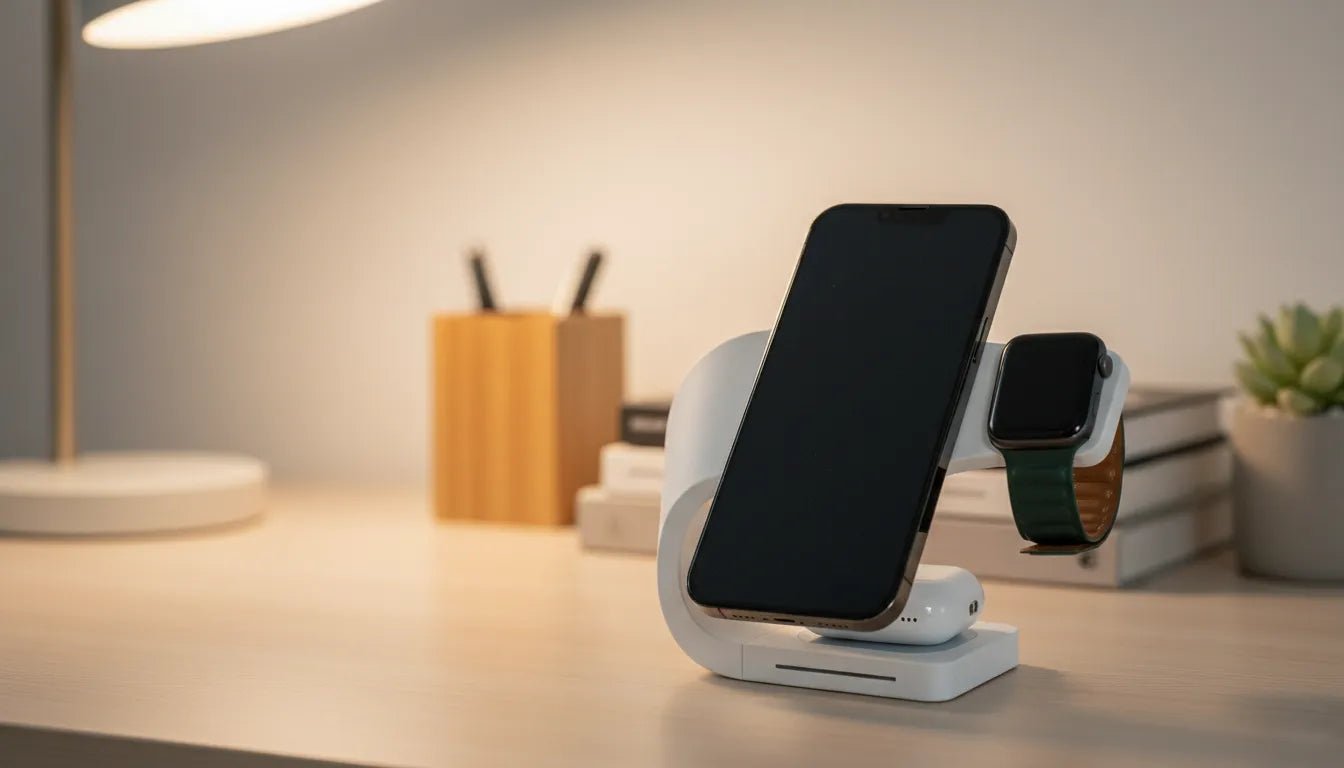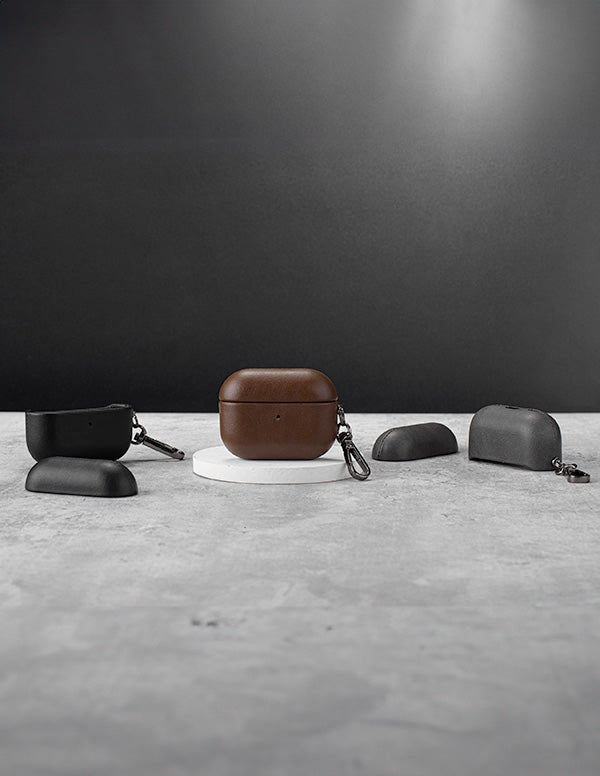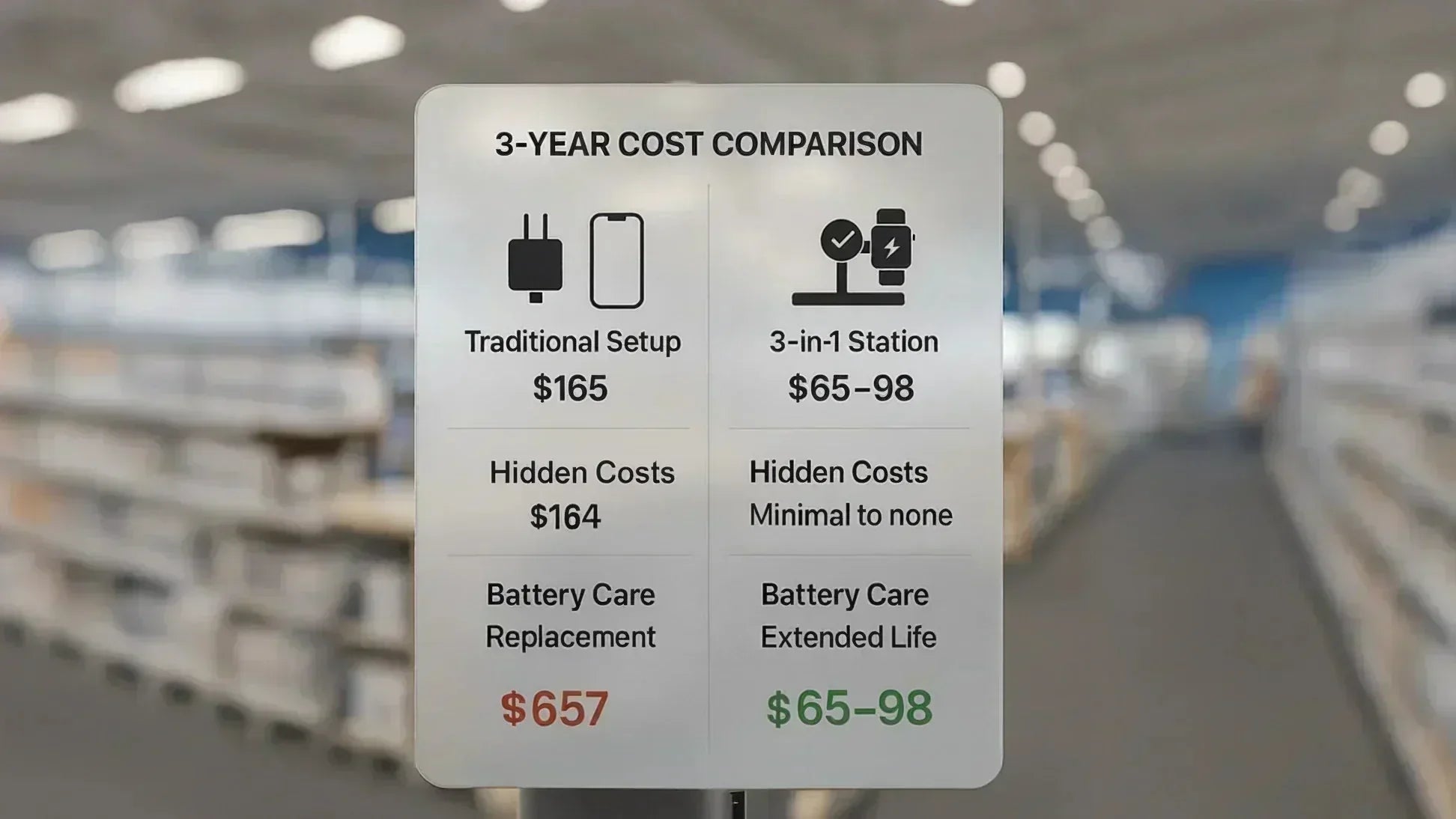Protecting your new iPhone isn't just about cases and screen protectors—though those matter too. Your battery health is probably more important than you think, with smart charging habits making the difference between 98% capacity after a year versus the typical 85%. Heat is your iPhone's biggest enemy, whether from direct sunlight or crappy chargers. Wireless charging with proper temperature management actually extends battery life, while poor charging habits can kill it. Physical protection needs MagSafe compatibility for newer models, and your digital security settings are just as crucial as physical protection.
A comprehensive protection strategy covers all these bases, not just the obvious ones. Modern Standard's intelligent chargers with temperature regulation help maintain battery health while the Essentia MagSafe Case provides protection without blocking wireless charging.
Alright, so Apple's about to drop the iPhone 17 series next week, and if the rumors are true, we're looking at prices starting from $799 for the base model and climbing up to $1,249 for the Pro Max. That's serious money. Whether you're eyeing the sleek new iPhone 17 Air or going all-in on the Pro, you'll want to keep that investment in perfect condition.
Here's the thing though – most people think protection means throwing on a case and calling it good. But there's way more to it, from keeping your battery healthy to preventing overheating disasters. This guide covers everything you need to know about protecting your iPhone, whether it's your first or your fifth.
Physical Protection Essentials
Let's start with the obvious stuff – keeping your phone in one piece when gravity inevitably wins.
Screen Protection That Actually Works
Look, I've seen people spend $1,200 on an iPhone and then stick a $3 screen protector on it. That's like buying a Tesla and filling it with regular gas. Tempered glass protectors are your only real option here – they absorb impact, resist scratches, and when they do crack, they crack instead of your actual screen.
Installation tip from someone who's screwed this up more times than I care to admit: clean the screen with the alcohol wipe, dust it with the microfiber cloth, then use the sticky tape that comes in the kit to remove every last speck of dust. Those tiny particles become permanent bubbles that'll bug you for the next two years.
Case Selection Strategy
Here's where it gets interesting with the newer iPhones. If you've got anything from the iPhone 12 onwards, you need to think about MagSafe compatibility. There's no point having wireless charging if your case blocks it, right?
The Essentia MagSafe Case is actually perfect for this – it maintains full charging compatibility while giving solid protection. But whatever case you choose, look for drop ratings. Those "military-grade" claims usually mean the case survived being dropped onto concrete from 6 feet. Repeatedly.
Don't get sucked into the ultra-thin case trap either. Yes, they preserve the iPhone's sleek design, but they offer about as much protection as a paper umbrella in a tornado. Find the sweet spot between protection and aesthetics – your future self will thank you when you inevitably drop it getting out of the car.
Battery Health: Your iPhone's Hidden Vulnerability
This is where most people get it completely wrong, and it's costing them hundreds.
Understanding Battery Degradation
Your iPhone's battery health is like a slow-motion car crash – you don't notice it happening until it's too late. Every charging cycle wears down the lithium-ion cells a tiny bit. Heat accelerates this process dramatically. Most people see their battery health drop to 85% within the first year and think that's normal. It's not.
I've got a screenshot here from someone who's been using their iPhone for a full year with only 2% battery drain – sitting pretty at 98% battery health. The difference? Smart charging habits and proper thermal management.
Real iPhone showing 98% battery health after 12 months – this is what proper protection looks like
Smart Charging Habits That Extend Battery Life
The 20-80% rule isn't just tech geek nonsense – it's based on actual lithium-ion chemistry. Keeping your battery between 20% and 80% most of the time significantly reduces stress on the cells. Yes, it's a bit inconvenient, but so is your phone dying at 30% after 18 months.
That overnight charging myth? Mostly BS with modern iPhones. They're smart enough to stop charging at 100% and switch to trickle maintenance. The real issue is heat buildup during charging, especially if your phone is buried under pillows or stuck in a case that doesn't breathe.
Why Wireless Charging Can Be Better for Battery Health
Here's something that'll surprise you – wireless charging can actually be gentler on your battery than cable charging. Modern wireless chargers with intelligent protection prevent overcharging automatically and often include temperature monitoring.
The Magnitis 3-in-1 charger, for example, features superior cooling technology to protect your device during charging. No more waking up to a phone that's hot enough to cook an egg. The magnetic alignment also means no wear and tear on your charging port – that little connector breaks more often than you'd think.
Preventing Overheating Damage
Heat is your iPhone's kryptonite. It'll throttle performance, damage the battery, and in extreme cases, cause permanent hardware damage.
Heat Sources That Threaten Your iPhone
The car dashboard in summer? Death trap. Direct sunlight at the beach? Battery killer. Charging while running intensive apps? Thermal nightmare. Your iPhone starts throttling performance at around 95°F and shuts down completely at 117°F. That's not hard to reach on a warm day.
I learned this the hard way in Arizona last summer. Left my phone on the pool deck for 20 minutes and came back to a device so hot I couldn't hold it. Took hours to cool down and the battery health dropped by 3% in that single incident.
Cooling Solutions and Prevention
Create optimal charging environments – somewhere cool, well-ventilated, away from other heat sources. If you're charging wirelessly, make sure there's airflow around the charger. Those chargers with temperature regulation features aren't marketing gimmicks; they're genuinely protecting your investment.
Watch for the warning signs too: your phone getting warm during normal use, apps running slowly, or the camera app shutting down unexpectedly. These are all heat-related performance throttling.
Digital Protection and Privacy
Physical protection means nothing if someone can access all your data anyway.
iOS Security Settings Every Owner Should Enable
Face ID or Touch ID isn't just convenient – it's your first line of defense. But don't stop there. Two-factor authentication on your Apple ID is non-negotiable. If someone gets into your Apple account, they can remotely wipe your device or access everything in iCloud.
Go through your app permissions too. Does that weather app really need access to your contacts? Probably not. Privacy settings buried in the depths of iOS can be more important than any physical case.
Backup Strategy Essentials
iCloud backup is convenient, but it's not bulletproof. Have a secondary backup strategy – whether that's iTunes on your computer or a third-party service. The rule is simple: if it would be devastating to lose, it should exist in at least two places.
Set up automatic backups and test them occasionally. Nothing worse than discovering your backup system failed when you actually need it.
Environmental and Lifestyle Protection
Your iPhone faces threats you probably haven't considered.
Water and Weather Damage Prevention
That IP68 rating doesn't mean waterproof – it means water-resistant under specific laboratory conditions. Real-world water exposure is different. Pool chemicals, salt water, soap, and even high-pressure water can overwhelm those seals.
The rating is also based on a new device. As your phone ages and gets dropped, those seals can compromise. That confidence you had taking underwater photos might be misplaced six months later.
Travel Protection Strategies
Airport security is rough on electronics. Those plastic bins have seen more abuse than a rental car. Keep your phone in a protective case during travel, not loose in a bin.
International charging is another minefield. Voltage differences and questionable power quality can damage your device. A compact travel charger like the Cubica eliminates the need for multiple cables and adapters, reducing failure points.
Workspace Organization for Device Safety
Cable management isn't just about aesthetics – tangled cables are trip hazards that'll send your phone flying. Organized charging stations reduce the risk of accidents and keep your devices properly ventilated during charging.
When Things Go Wrong: Damage Response
Because Murphy's Law applies especially to expensive electronics.
Immediate Response to Common Accidents
Dropped your phone? Don't immediately check if it's working – inspect it first. Hairline cracks can become major failures if you apply pressure to the screen. Water damage? Turn it off immediately and resist the rice trick – it's largely ineffective and can cause corrosion.
For screen cracks, assess whether it's just the protector or the actual display. If it's the protector, perfect – that's exactly what it was meant to do. If it's the screen itself, avoid using the phone until you can get it repaired.
Warranty and Repair Considerations
AppleCare+ isn't cheap, but neither are repairs. Screen replacements start around $300, and that's for the basic models. Water damage can write off the entire device. Do the math on your specific situation, but for devices over $800, it usually makes sense.
Third-party repairs can void your warranty and sometimes cause more problems. Those "genuine" screens on eBay often aren't, and you'll notice the difference in color accuracy and touch responsiveness.
Long-term Protection Investment Strategy
Think of protection as insurance, not expense.
Cost-Benefit Analysis of Protection
A proper screen protector and case might cost $50-80. A screen replacement costs $300-400. Battery replacement is $89 from Apple. Suddenly that protection cost looks pretty reasonable, doesn't it?
Quality accessories are long-term investments too. A well-made wireless charger with intelligent protection features will outlast several phone upgrades and help maintain battery health across all your devices.
The resale value consideration is real too. A phone with 95% battery health and zero scratches commands a significant premium over one that's been through hell.
Conclusion
Protecting your new iPhone – whether it's the upcoming iPhone 17 or a current model – requires more than just slapping on a case. It's about understanding the threats: heat damage to your battery, physical impacts, environmental hazards, and digital security risks.
The battery health piece is probably the most underestimated. Smart charging habits and proper thermal management can keep your battery at 95%+ for years, while poor practices will have you looking for replacement batteries within 18 months.
Physical protection needs to be MagSafe-compatible for newer models, digital security settings are as important as any case, and environmental awareness prevents damage before it happens.
The investment in proper protection – quality cases, intelligent chargers, and good habits – pays for itself many times over. Build your complete iPhone protection setup with accessories designed to work together, not just individually.
Your future self, still enjoying 98% battery health and a pristine device, will thank you for taking protection seriously from day one.












Share:
5 Ways to Fix MagSafe Charger Overheating
Best 3-in-1 Charging Station Apple Users Need: 10 Game-Changing Benefits